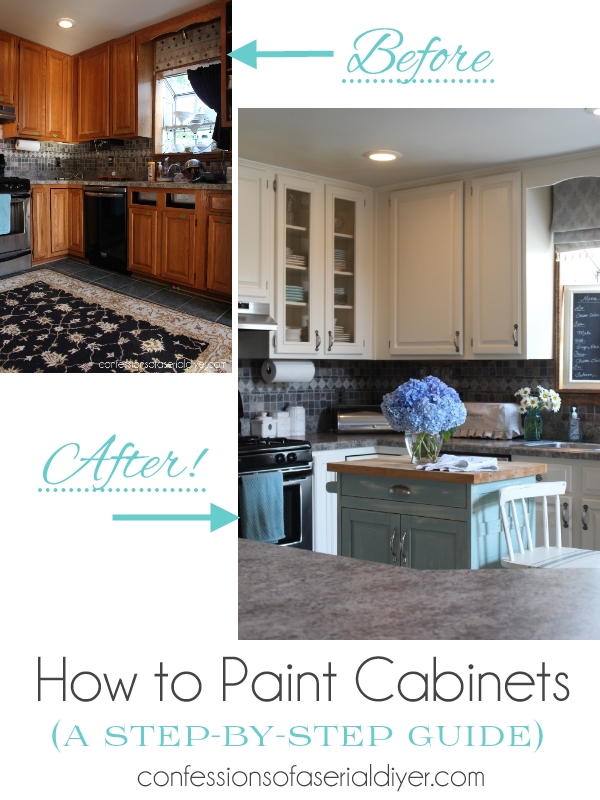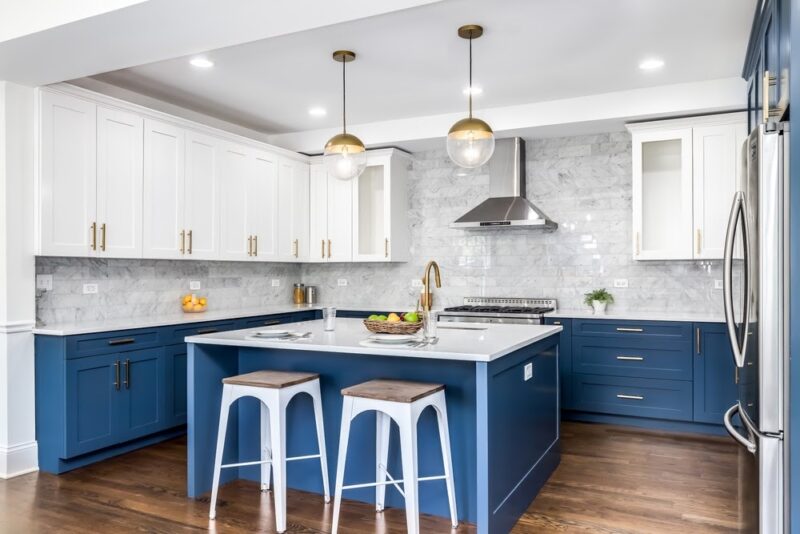The number of coats of paint you will need for your kitchen cabinets depends on the type of paint you are using, the condition of your cabinets, and the desired finish. If you are painting over bare wood or previously painted cabinets, you will likely need two coats of paint. If you are using a high-quality paint and want a smooth, even finish, you may need three coats of paint.
How Many Painting Coats On Kitchen Cabinets?
If you’re painting your kitchen cabinets, how many coats of paint should you use? The general rule is two to three coats, but there are a few other factors to consider.
The first is the type of paint you’re using.
If you’re using an oil-based paint, you’ll need at least three coats. Water-based paints can usually get by with two coats.
The second factor is the color of the paint.
Darker colors will require more coats than lighter colors. This is because darker colors tend to show brush strokes more than lighter colors. So if you’re painting your cabinets white, you might be able to get away with just two coats.
But if you’re painting them black, you’ll probably need at least three coats for a smooth finish.
The third factor is the quality of the paint job itself. If it’s done well, fewer coats may be necessary.
But if there are any imperfections or missed spots, additional coats will be needed to cover them up.
In general, most kitchen cabinets will need two to three coats of paint for a good job. But as always, it’s best to consult with a professional painter before starting any project!
How to Get a Factory Finish on Cabinets
Are your cabinets in dire need of a makeover but you don’t have the budget for a professional refinishing job? Don’t despair! With a little elbow grease and some know-how, you can achieve a factory-finish on your cabinets that will transform your kitchen or bathroom.
Here’s what you need to do:
1. Remove all hardware from the cabinets. This includes knobs, pulls, and hinges.
If possible, label each piece as you remove it so you’ll know where it goes when it’s time to reassemble everything.
2. Using a fine-grit sandpaper, lightly sand all surfaces of the cabinet doors and drawers. Be sure to go with the grain of the wood and avoid sanding too aggressively which could damage the wood.
3. Once all surfaces have been sanded, wipe down the cabinets with a damp cloth to remove any dust particles.
4. Next, apply a primer to all surfaces using a paintbrush or roller designed for use with latex paint. Allow the primer to dry completely according to manufacturer’s instructions before moving on to painting step.
5 Paint the cabinet doors and drawers using two coats of high-quality latex paint in your desired color/s . Again, be sure to follow all drying instructions between coats . Finish up by reinstalling all hardware .
And voila! You’ve just given your cabinets a facelift that rivals any professional job .

Credit: www.confessionsofaserialdiyer.com
Can You Do 3 Coats of Paint on Cabinets?
If you’re painting cabinets, you may be wondering if you need to do three coats of paint. The answer depends on the type of paint you’re using and the look you’re going for.
If you’re using a latex paint, two coats should be sufficient.
Latex paint is very forgiving and easy to work with. It also has a good amount of pigment in it, so two coats will give you good coverage.
However, if you’re using an oil-based paint, you may want to consider doing three coats.
Oil-based paints can be tricky to work with and don’t always lay down as smooth as latex paints. They also have less pigment in them, so three coats will give you better coverage and a more even finish.
How Many Coats of Paint on Cabinets is Too Much?
There is no definitive answer to this question as it depends on a number of factors, including the type of paint being used, the condition of the cabinets, and the desired finish. Generally speaking, however, three coats of paint should be sufficient for most projects. If more than three coats are needed, it is likely that there are some underlying issues with the cabinets that should be addressed before proceeding.
Is One Coat of Paint Enough for Kitchen Cabinets?
No, one coat of paint is not enough for kitchen cabinets. You need at least two coats to get a smooth, even finish that will last.
How Long Should I Wait between Coats of Paint on Cabinets?
Assuming you’re talking about painting cabinets with a brush and roller, the general rule of thumb is to wait 2-4 hours between coats. This gives the paint time to set up and dry without being disturbed. If it’s too hot or humid outside, you may need to wait even longer between coats.
If you’re using a paint sprayer, you can usually get away with waiting 1-2 hours between coats. But again, if it’s hot and humid, give the paint more time to dry.
The most important thing is to not disturb the paint while it’s drying.
So no opening doors or windows near the painted cabinets, and definitely no walking on wet paint!
Conclusion
The kitchen is one of the most important rooms in the house, so it’s no surprise that many homeowners want to make sure their kitchen cabinets are perfect. One question they often ask is how many coats of paint they should use.
It’s important to keep in mind that there are a few factors that will affect how many coats of paint you need, such as the type of paint you’re using and the condition of your cabinets.
If you’re using a high-quality paint, you may only need one or two coats. However, if you’re using a lower quality paint or your cabinets are in poor condition, you may need three or more coats.
Another factor to consider is the color of your cabinets.
If you’re painting them a dark color, you may need an additional coat or two to achieve full coverage. On the other hand, if you’re painting them a light color, one or two coats should be sufficient.
Ultimately, it’s best to consult with a professional painter before starting your project so they can assess your specific needs and recommend the best course of action.



